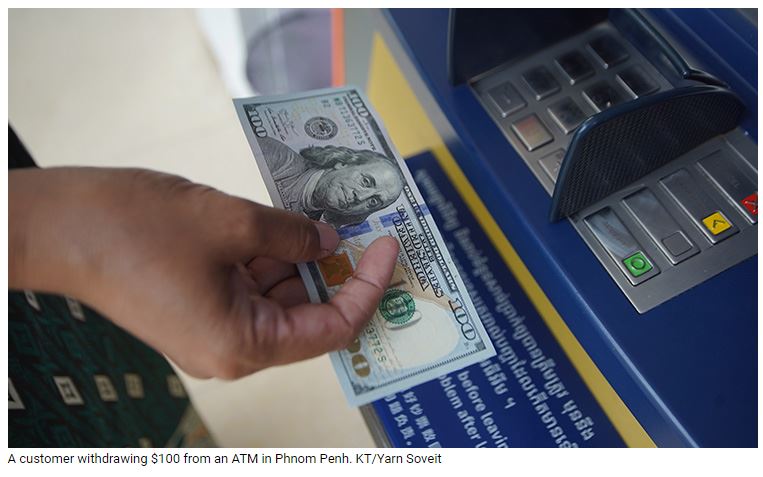Cambodia’s dollarisation peaks among neighbouring countries
Cambodia became Asia’s most dollarised economy, while dollarisation in neighbouring Lao P.D.R., Mongolia and Vietnam was either declining or broadly stable, a report by the International Monetary Fund (IMF) said a decade ago. Ten years later the grim reading remained unchanged compared to other economies in the region.
Since Cambodia’s economy has been substantially dollarised, there are a large amount of foreign currency deposits in the banking system, which is reflected in the ratio of foreign currency deposits to total deposits in all currencies or the ratio of foreign currency deposits to broad money — total money in circulation in the economy.
According to the Annual Report of NBC for 2022, the ratio of foreign currency deposits to broad money stood at 84.1 percent last year, which increased 1.1 percent compared to 83 percent in 2021, while Riel in circulation stayed at 7.7 percent compared to broad money, deposits and loans in Riel was 8.9 percent of total deposits and 11.2 percent of the total loan portfolio in Cambodia.
This is an exceptional situation compared to neighbouring countries such as Viet Nam and Laos, said IMF Country Reports issued on December 2022, pointing out that Cambodia’s dollarisation had still stood between 80 percent to 90 percent from early 2011 to early 2021, while Laos and Viet Nam stood at about 60 percent and 10 percent respectively.
The Mongolia Economic Update issued on April 2022 by the World Bank Group shows that the country’s dollarisation of deposits and current account—foreign exchange deposits- to-total deposits and foreign current account- to-total current account ratios—was estimated to be less than 40 percent respectively with a fixed exchange rate that allows the estimation to avoid the effect of nominal depreciation.
NBC’s Economic and Monetary Statistics for November 2022 shows that the deposits in Riel rose to 11 percent of the total amount of deposits in all currencies in November last year, while the deposits in dollars and other currencies fell to 89 percent, which contributed 50.3 percent by fixed or termed deposits, 28.5 percent by savings deposits, 19.8 percent by current deposits and 1.5 percent by other categories of deposits.
“The central bank should complement prudential measures by gradually restoring minimum reserve requirements to pre-crisis levels to help reign in credit growth and mitigate the risk of domestic inflation risks going forward. Given the managed floating exchange rate regime and extensive dollarisation, addressing external imbalances falls to gradual fiscal consolidation and structural reforms,” IMF’s report pointed out.
The report indicates that global food and fuel price inflation could prove to be more persistent and inflation expectations could de-anchor in advanced countries, further incurring more rapid tightening of monetary conditions and borrowing costs, and lower growth in advanced economies. Imported food and fuel price increases could generate second-round effects in domestic inflation that would damage aggregate demand, which would be accentuated if the currency depreciated, given extensive dollarization.
“Due to high dollarisation, nominal depreciation alone would not significantly address external imbalances. The burden of external adjustment, therefore, falls onto gradual fiscal consolidation, on measures to contain credit growth, and on reforms to improve long-run productivity,” the report pointed out.
“The exchange rate regime and extensive dollarisation limit the ability of monetary policy to respond to inflation.
“The exchange rate follows a managed float; moreover, the economy is highly dollarised,” said the report.
Source: https://www.khmertimeskh.com/501271802/cambodias-dollarisation-peaks-among-neighbouring-countries-2/


 English
English




